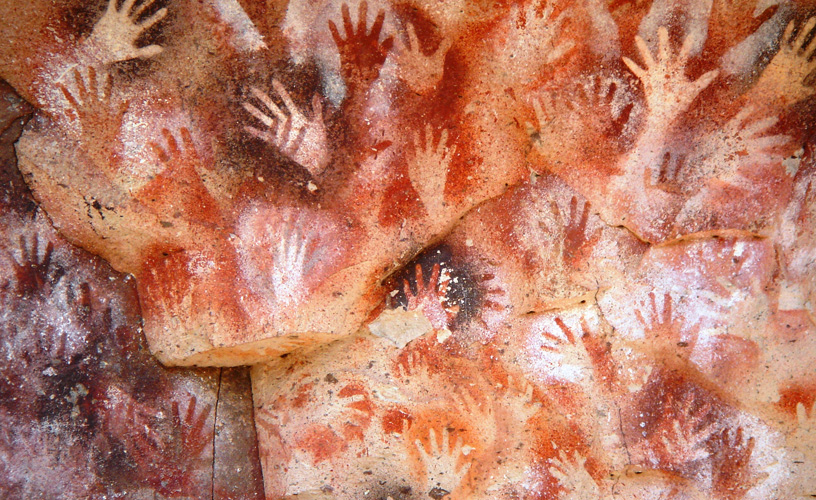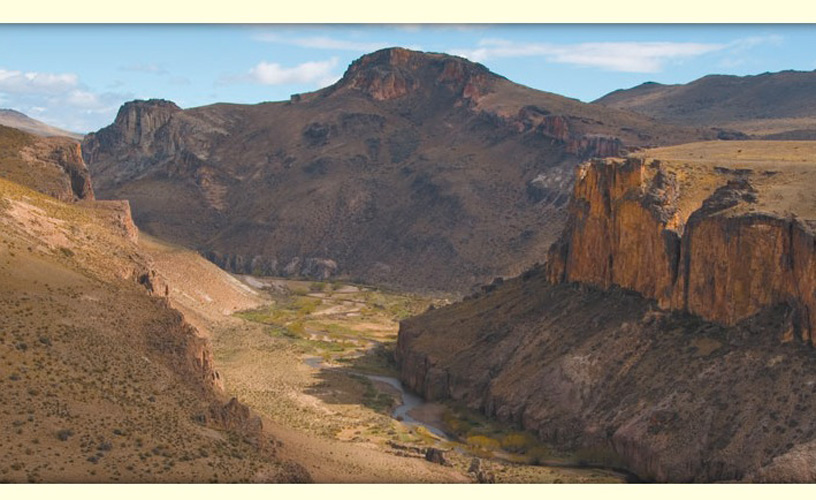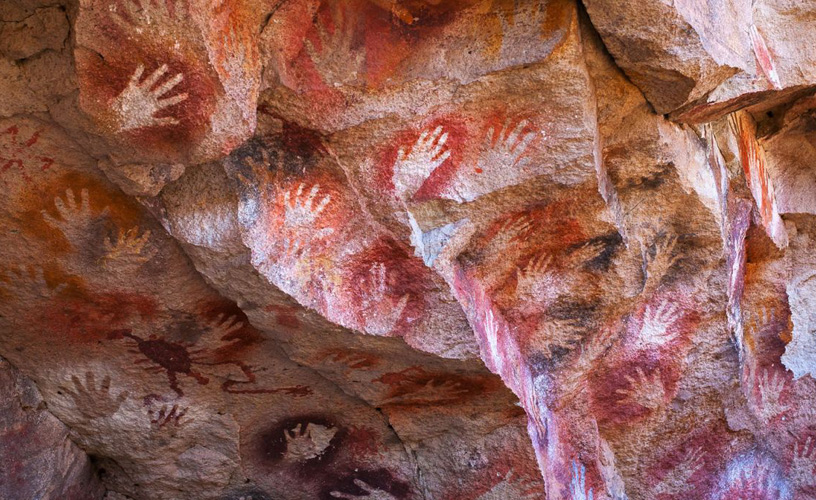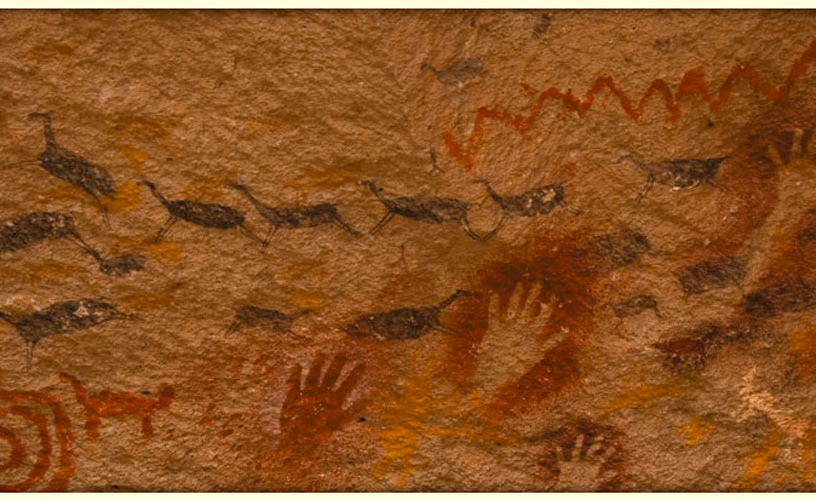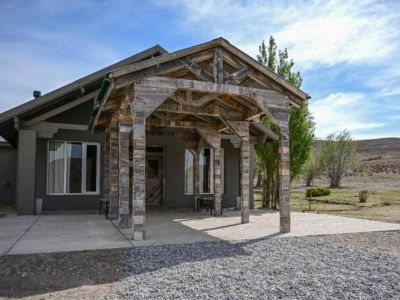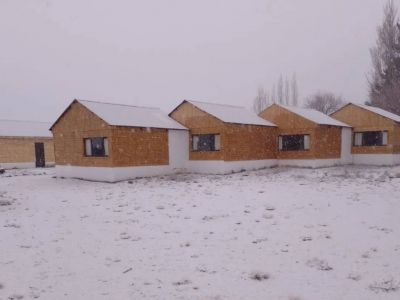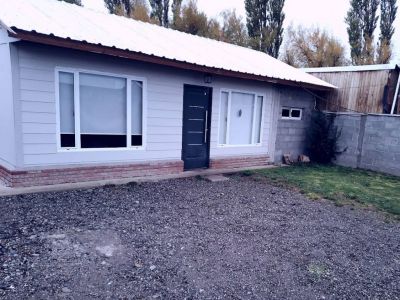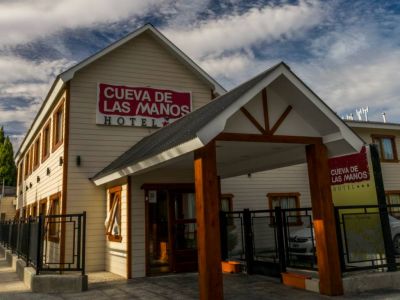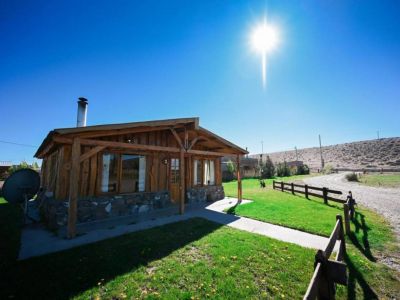The Patagonian plateau holds secrets and surprises well worth discovering although it means going long stretches along this barren land. The outing from Perito Moreno leads to a fascinating display of drawings and paintings by the primitive inhabitants, the pretehuelches.
We drove out of Perito Moreno to see these amazing cave paintings. Before reaching the Pinturas River canyon, every now and then we came across guanacos, rheas and hares.
A feeling of excitement overcame us at the Interpretation Center as we prepared to follow our guide along the paths to see the rock shelters and caves. Carrying a water bottle, we set off along the trail by the river, next to an imposing porphyritic, volcanic rock wall towards the famous Cueva de las Manos (Cave of the Hands).
Cueva de las Manos Rock Paintings
Whenever we looked down to the river, 170 meters below, we could not help a slight feeling of vertigo. At the onset, the path led down towards the river, but it soon began to rise steeply, requiring quite an effort.
The moment to see what we had looked at so many times in photos had come at last: the main cave. We paid careful attention to our guide to better understand the meaning of all the drawings.
‘’Hundreds of hands and other patterns in negative and positive using reds, ochers, yellows, greens, black and whites have been recorded. Human figures and guanaco hunting scenes have been studied by archeologists since 1972. Carbon 14 testing has determined the age of the different scenes.’’
Research established the existence of the casapedrense culture 7,500 years ago. The figures illustrate the way they hunted guanacos, skunks, deer and rodents as well as birds whose skin, meat and bones they made excellent use of. Lithic pieces such as arrow heads, scrapers and rasps have also been found.
Regarding the toldense culture, prior to the casapedrense, archeologists have determined that they were even more skilled. For instance, they invented boleadoras, a throwing weapon made of rounded stones at the end of interconnected crude leather straps.
Adventure on the Go
As we were leaving, we learned that there are interesting trekking options. Some estancias provide accommodation as well as full day archeological outings to Cueva de las Manos, Charcamata and Cueva Grande.
The best-known are estancias Cueva de las Manos (formerly Los Toldos) and Casa de Piedra. They are relatively near the sites and offer a ride in a 4WD the first part of the way, and trekking in very rugged terrain, the second.
The rock paintings reveal the nature and culture of the unique Patagonian prehistory. Because of their characteristics, they have been earned the status of National Historic Monument and World Heritage Site (UNESCO).
As the day came to an end, as did our walk, a feeling of respect for this site which has lasted so long in such excellent condition came over us. We sincerely hope future generations will visit and preserve it.
Mónica Pons
Gentileza Santacruz.tur.ar
Contact of the excursion or tour
Municipalidad
San Martín 1776, Perito Moreno, Santa Cruz, Agentina
Phone: +54 2963-432732
Cueva de las Manos (ex Los Toldos)
Bernardo O`Higgins 1147, Perito Moreno, Santa Cruz, Agentina
Phone: +54 11-49010436
Camping Estancia Casa de Piedra
Ubicada a 80 kilómetros al sur, sobre ruta nacional 40, Perito Moreno, Santa Cruz, Agentina
Phone: +54 2963-432199
Demanding on the following ledges.
